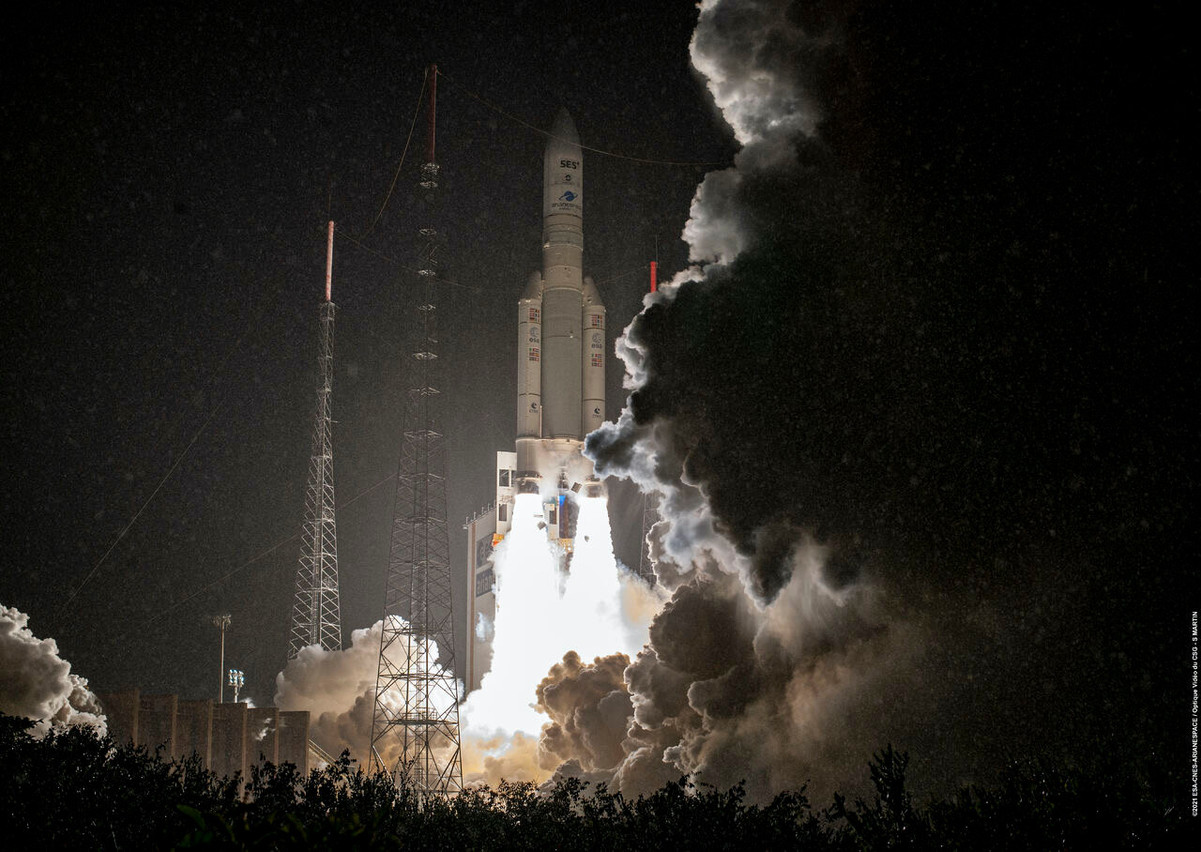With a year's delay due to Covid and a final 24-hour postponement for ground checks, Arianespace achieved a triple record last night in Kourou, carrying the heaviest payload in its history (more than 10 tonnes) in an unprecedented configuration of its launcher, which was 150 metres longer than the previous record.
Less than 39 minutes later, the Luxembourg satellite was separated to start its orbit of 67.1 degrees West, which will enable it to cover the entire American continent from north to south, the Atlantic Ocean and the Caribbean for at least 15 years. It will begin operation in mid-2022.
“We are immensely excited to have SES-17 join our GEO fleet and medium earth orbit (MEO) constellation. SES-17 is the fruit of a successful collaboration between the Thales Group, Thales Alenia Space and SES, and will enable us to address the exponential connectivity demands in aviation and maritime, and to accelerate digital inclusion initiatives across the Americas,” said Steve Collar, CEO of SES. “Thanks to Arianespace, SES-17 is now on its way to orbit. We are looking forward to SES customers being able to leverage the high throughput, global reach and low-latency of SES’s multi-orbit, interoperable Ka-band satellite network comprising SES-17 and our upcoming O3b mPOWER constellation.”
“What a launch – SES-17 has mobilised all Thales Alenia Space experts – from the innovative design of the satellite itself to the last combined operations – and is now on its way to orbit. Fully-digital and highly-innovative, SES-17 will benefit from all the state-of-art technologies we have developed to fulfill the market’s connectivity needs,” said Herve Derrey CEO of Thales Alenia Space.
The satellite’s main asset is its DTP, which allows the connectivity offered to be reconfigured every second according to requirements. Combined with 200 spots, it will be able to meet the needs of aviation or cruise ship passengers, but also of sparsely covered areas in the United States and the US government. This means up to 2 gigabits per second per connection.
SES-17 also marks the start of an exciting 12 months for the Luxembourg-based operator: in early December, it will launch the first three O3b mPowers, followed by three more in the first quarter of 2022, three more in the first half of 2022, and then SES-18, SES-19, SES-20 and SES-21 in the second half of the year, in line with its commitments to free up the C-band in the US for 5G.
This article was originally written in French for and has been translated and edited by Delano
